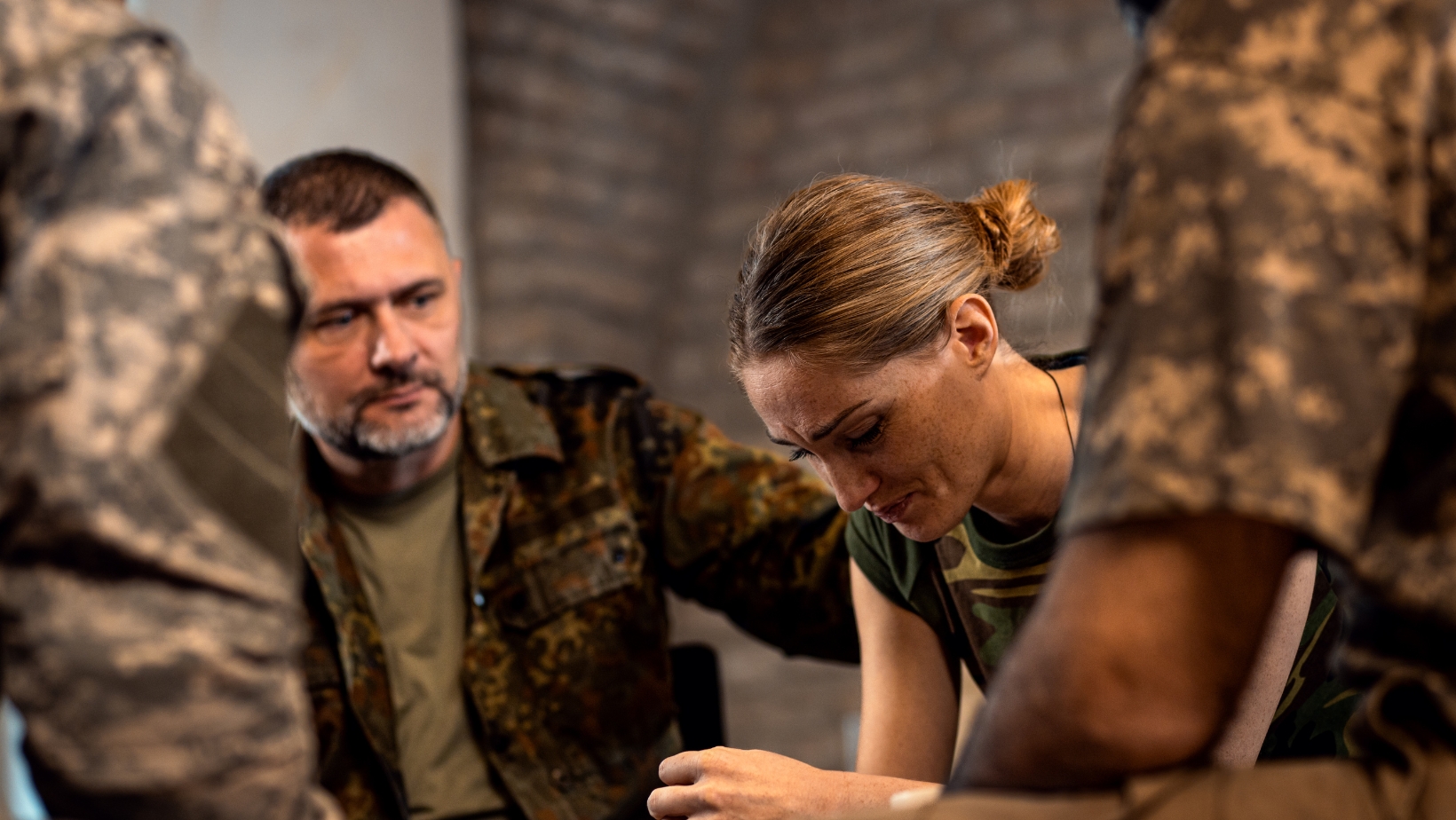Post-Traumatic Stress Disorder (PTSD) is a mental health condition that can develop after experiencing or witnessing a traumatic event. For veterans, the nature of military service often exposes them to situations that increase their risk of developing PTSD, such as combat, life-threatening missions, and witnessing violence.
According to the U.S. Department of Veterans Affairs (VA), approximately 11-20% of veterans who served in Operations Iraqi Freedom (OIF) and Enduring Freedom (OEF) experience PTSD in a given year. Despite advancements in awareness and treatment, veterans with PTSD continue to face unique challenges that affect their emotional well-being, relationships, and reintegration into civilian life.
This article explores the challenges veterans face with PTSD and highlights the support systems available to help them navigate their journey toward recovery.
Table of Contents
ToggleUnderstanding PTSD in Veterans
PTSD in veterans often stems from the intense and life-threatening experiences encountered during military service. These traumatic events can disrupt normal emotional and cognitive processing, leading to long-term symptoms that interfere with daily life.
Common Symptoms of PTSD in Veterans
Veterans with PTSD may experience:
1. Intrusive Memories: Flashbacks, nightmares, or distressing thoughts related to traumatic events.
2. Avoidance: Avoiding people, places, or situations that remind them of their trauma.
3. Hyperarousal: Being easily startled, constantly on edge, or having trouble sleeping.
4. Negative thoughts and Feelings: Persistent guilt, shame, or difficulty connecting with others.
These symptoms can vary in intensity, sometimes becoming debilitating without proper support.
Challenges Faced by Veterans with PTSD
1. Difficulty Transitioning to Civilian Life
Reintegrating into civilian life is a significant hurdle for many veterans with PTSD. The structured, high-stress environment of military service is vastly different from civilian routines, and this adjustment can trigger feelings of isolation or purposelessness.
Example:
A veteran returning from combat may struggle with everyday situations, such as crowded spaces or loud noises, which can trigger hypervigilance or flashbacks.
2. Stigma Around Mental Health
Despite growing awareness of PTSD, the stigma surrounding mental health remains a barrier for veterans. Many worry that seeking help might be seen as a sign of weakness or could negatively impact their careers.
Statistics:
A report by the National Center for PTSD found that 60% of veterans with mental health issues do not seek treatment due to stigma or fear of judgment.
3. Relationship Struggles
PTSD often affects veterans’ relationships with their families and friends.

Symptoms like irritability, emotional withdrawal, or difficulty communicating can strain even the strongest bonds.
4. Risk of Substance Abuse
Veterans with PTSD are at an increased risk of turning to drugs or alcohol as a coping mechanism. The Substance Abuse and Mental Health Services Administration (SAMHSA) reports that about 1 in 3 veterans with PTSD also struggle with substance use disorder.
Support Systems for Veterans with PTSD
While PTSD presents significant challenges, numerous support systems are available to help veterans manage their symptoms and regain a sense of normalcy.
1. Therapy and Counseling
Cognitive Behavioral Therapy (CBT)
CBT helps veterans identify and reframe negative thought patterns. Trauma-focused approaches, such as Cognitive Processing Therapy (CPT) and Prolonged Exposure (PE) Therapy, are particularly effective for addressing PTSD.
Eye Movement Desensitization and Reprocessing (EMDR)
EMDR is a structured therapy that helps veterans reprocess traumatic memories and reduce their emotional impact.
2. Medication
Medications like Selective Serotonin Reuptake Inhibitors (SSRIs) can help manage symptoms such as anxiety and depression. While not a standalone solution, medication is often used alongside therapy.
3. Veterans Affairs (VA) Services
The VA provides extensive resources for veterans, including:
– PTSD Treatment Programs: Specialized centers offering therapy, group counseling, and medication management.
– Vet Centers: Community-based facilities providing confidential counseling for combat veterans and their families.
Statistics:
The VA reports that veterans who engage in its PTSD treatment programs show a 30-50% reduction in symptoms within the first year.
Community and Peer Support
1. Veteran Support Groups
Connecting with fellow veterans who understand the challenges of military service and PTSD can be deeply therapeutic. Support groups foster a sense of belonging and reduce feelings of isolation.
Example:
Organizations like Wounded Warrior Project and Team Red, White & Blue provide peer support and recreational activities to help veterans build connections and improve their mental health.
2. Family Education and Involvement
Educating families about PTSD helps them better understand their loved one’s struggles and provides tools for offering support. Programs like the VA’s Family Services focus on strengthening family bonds and improving communication.
Holistic and Alternative Approaches
Many veterans find relief through alternative therapies that address the mind-body connection:

1. Mindfulness and Meditation
Practices like yoga, deep breathing, and mindfulness meditation help veterans manage stress, improve emotional regulation, and reduce hyperarousal.
Research Insight:
A study published in the Journal of Traumatic Stress found that mindfulness-based stress reduction programs led to a 20% improvement in PTSD symptoms among veterans.
2. Service Animals
Service dogs trained to assist veterans with PTSD can provide companionship, reduce anxiety, and help manage symptoms like flashbacks or nightmares.
3. Creative Therapies
Art, music, and writing therapies give veterans an outlet for expressing emotions that may be difficult to verbalize in traditional therapy.
How Loved Ones Can Help
Family and friends play a critical role in a veteran’s recovery journey. Some ways to offer support include:
– Listening Without Judgment: Encourage open conversations about their experiences.
– Promoting Treatment: Gently encourage professional help and reassure them it’s a sign of strength.
– Practicing Patience: Recovery from PTSD is a gradual process, and setbacks are common.
Conclusion
PTSD is a significant challenge for many veterans, but it’s not insurmountable. With the right combination of therapy, community support, and coping strategies, veterans can regain control over their lives.
Breaking the stigma around mental health and ensuring access to effective treatment are crucial steps in helping veterans heal from the invisible wounds of trauma. For those who have served their country, the road to recovery should always be paved with understanding, compassion, and support.






